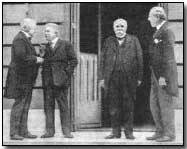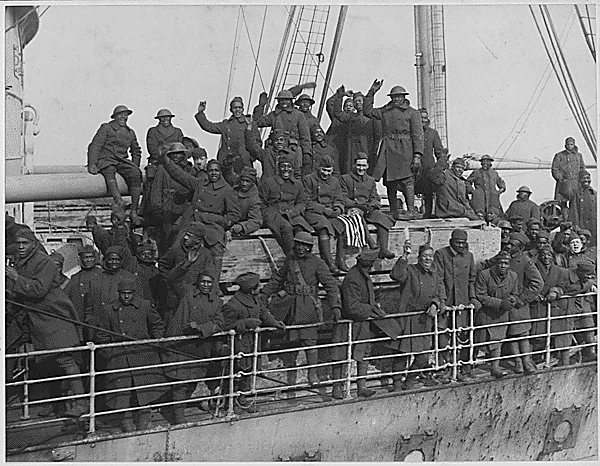Categories
Tags
- "I Have a Dream"
- 1906
- 1929
- 1960s
- 1963
- African-Americans
- African American
- Baby Boom
- Bill Clinton
- Birmingham
- Child Labor
- civil rights
- Civil Rights Movement
- Cold War
- communism
- Discrimination
- economics
- End of Segregation
- finance
- flappers
- Freedom
- Great depression
- Hilary Clinton
- human rights
- impeachment
- Japanese Internment Camp
- LAPD
- Martin Luther King
- Martin Luther King Jr.
- music
- Post WWII Events
- President
- prohibition
- racial discrimination
- Racism
- Richard Nixon
- rights
- segregation
- slavery
- Soviet Union
- Wall Street
- War
- Woodrow Wilson
- World War I
- WWI
Category Archives: June 28 assignment
Flappers
[kml_flashembed movie="http://www.youtube.com/v/3svvCj4yhYc" width="425" height="350" wmode="transparent" /]The flappers of the 1920s marked the beginning of a revolution of women. During this time, women ditched their conservative feminine looks and went for clothing, makeup and hairstyles that were a far cry from the norm and considered inappropriate at the time. Young women asserted their freedom by voting, driving cars, dancing, drinking, smoking cigarettes, staying out late, and going to “petting parties”.
Flappers of the 1920s are possibly best known for their style. At a time when corsets, long hair and long gowns were the norm, flappers introduced a more boyish look. Young women showed off their legs in short skirts, chopped their hair off into short bobs and wore excessive amounts of makeup. Kohl-rimmed eyes and bee-stung lips set the flappers apart from the rest. Accessories included newsboy caps, cloche hats, layered necklaces and horn-rimmed glasses. High heels came into fashion and dresses were often drop-waisted and knee-length to show off just enough leg when flappers danced.
This video depicts what life was like for a flapper.
Posted in 1920-1932, Cultural History, June 28 assignment, Social History, Uncategorized
Tagged flappers, Freedom, Roaring 20's, Style, Women Revolution
4 Comments
Flappers
The term flappers in the 1920s referred to a “new breed” of young women who wore short skirts, bobbed their hair, listened to jazz, and flaunted their disdain for what was then considered acceptable behavior. Flappers were seen as brash for wearing excessive makeup, drinking, treating sex in a casual manner, smoking, driving automobiles and otherwise flouting social and sexual norms.
Flappers had their origins in the period of liberalism, social and political turbulence and increased transatlantic cultural exchange that followed the end of the WORLD WAR , as well as the export of American jazz culture to Europe.
The photo shows “flappers” dancing “charleston” dance.
U.S Ultimatum to Germany regarding U-Boats
This here is a document from Woodrow Wilson giving an ultimatum to the German Government. This document is dated April 18, 1916. Germany’s policy of unrestricted submarine warfare led the the sinking of the Sussex, a merchant ship traveling on the English Channel. Germany would later withdraw their policy and would warn vessels first before sinking them. But in 1917, Germany would reinsert this policy, thus breaking off diplomatic relations between the U.S and Germany.
http://www.firstworldwar.com/source/uboat1916_usultimatum.htm
Posted in 1916-1920, June 28 assignment
Tagged U-Boats, Ultimatum, Woodrow Wilson
Comments Off on U.S Ultimatum to Germany regarding U-Boats
Child Labor in Fall River, Massachusetts.
This photo was found under a collection called National Child Labor Committee Collection. The photo was taken by Louis Wickes Hine 1916 who published over 5,000 photos depicting child labor. This 16 year old child whose name was Louis Pelissier was mentally challenged and didn’t know where he was supposed to work so he made his way to a mill and they couldn’t help him. He was a sweeper but the work was too hard for him.
Posted in 1900-1916, June 28 assignment, Social History
Tagged Child Labor, Louis WIckes Hines, Massachusetts, photography
5 Comments
New York City in the 1920s
http://www.youtube.com/watch?v=ud5wk-5NRNM.
Here is the video of New York City in the twenties. The documentary movie is implemented with short descriptions of every scene. I thought it would be interesting to see how the City lived more than 90 years ago.
Resources: Ira H. Gallen Video Resources that have spent over 30 collecting and restoring from 16mm & 35mm Film Prints and Kinescopes some of the rarest and in many cases one of a kind FILMS.
http://www.youtube.com/watch?v=EAKd_hCTqus
Wilson and Sussex Pledge
The document that I have linked here is then President Woodrow Wilson delivering a speech to Congress on April 19, 1916 regarding the German attack on a French passenger ship called the Sussex.
Germany had a policy of unrestricted submarine warfare on armed ships but not passenger ships. When the German U-Boats shot down the Sussex, the US had Germany make the Sussex Pledge which said that if Germany were to continue in this manner of firing on passenger ships, then the US would have no choice but to join the war in order to stop them.
In 1917, Germany felt that they could successfully destroy British shipping boats and end the war without the US having time to respond. They were very wrong. Upon the breaking of the Sussex Pledge, and a few other actions such as the Zimmerman note, the US joined World War I on the side of the Allies and Triple Entente.
The US was trying to maintain a stance of isolationism, but the Germans forced the US’s hand, and the US helped the Allies end the war.
Posted in 1916-1920, June 28 assignment
Tagged germany, submarine, sussex, Woodrow Wilson, World War I, WWI
Comments Off on Wilson and Sussex Pledge
Bonnie and Clyde
 Bonnie Parker (October 1, 1910 – May 23, 1934) and Clyde Barrow (March 24, 1909 – May 23, 1934) were well known outlaws, robbers and criminals who, with their gang, traveled the Central United States during the Great Depression. The photo above was found in their hiding place in Missouri.
Bonnie Parker (October 1, 1910 – May 23, 1934) and Clyde Barrow (March 24, 1909 – May 23, 1934) were well known outlaws, robbers and criminals who, with their gang, traveled the Central United States during the Great Depression. The photo above was found in their hiding place in Missouri.
Their exploits captured the attention of the American public during what is sometimes referred to as the “public enemy era” between 1931 and 1934. Though known today for his dozen-or-so bank robberies, Barrow in fact preferred to rob small stores or rural gas stations. The gang is believed to have killed at least nine police officers and committed several civilian murders. They were eventually ambushed and killed in Louisiana by law officers. The video below is the scene after their death. Bonnie and Clyde have become a symbol of dangerously in love couple and an inspiration for numerous movies, theater plays and songs.
Posted in 1920-1932, June 28 assignment, Social History
Tagged crimes, gangster, the great depression
3 Comments
League Of Nations
League of Nations was established on February 14 1919 as a result of the First World War. It was spearheaded by the 26th President Woodrow Wilson in his famous ‘fourteen point’ speech. The fourteen point plan outlined plans to reduce imperialism around the world, give colonies freedom and lay the foundations for the League of Nations. The main goals of the League of Nations was to establish international peace and not resort to wars.

http://www.youtube.com/watch?v=b-Uz0e4KJG0
Posted in 1916-1920, June 28 assignment, Political history, Social History, Uncategorized
Tagged 1918, League of Nations, President, WWI
2 Comments
The First Nobel Prizes Awarded – 1901
 Alfred Nobel created dynamite. Since he didn’t want to be remebered as a creator of such a deadly device, Nobel created a will that left a bulk of his fortune to the establishment of five prizes; physics, chemistry, medicine or physiology, peace and literature. On December 10, 1901, five years after Alfred Nobel’s death, the first five Nobel Prizes were awarded. Since it’s only awarded to people who had done a great deed, we can easily see and recorgnize who has done what. Also awards usually boost people to achieve a better result.
Alfred Nobel created dynamite. Since he didn’t want to be remebered as a creator of such a deadly device, Nobel created a will that left a bulk of his fortune to the establishment of five prizes; physics, chemistry, medicine or physiology, peace and literature. On December 10, 1901, five years after Alfred Nobel’s death, the first five Nobel Prizes were awarded. Since it’s only awarded to people who had done a great deed, we can easily see and recorgnize who has done what. Also awards usually boost people to achieve a better result.
Posted in 1900-1916, Economic History, June 28 assignment, Social History
Tagged 1901, award, Nobel, Prize
1 Comment
Harlem Hellfighters
The United States officially entered World War I on April 6, 1917. One of the first infantry regiments to arrive in France was the 369th Infantry. This infantry is more commonly known as the “Harlem Hellfighters.” This infantry was entirely made up of African Americans under the command of white officers. The Harlem Hellfighters fought with the French at Chateau-Thierry and Belleau Wood. These two battles stopped the Germans from advancing which led to a counterattack on the Germans. The Harlem Hellfighters fought in combat for 191 days, longer than any other American regiment.
The United States army drafted both black and white men but served in segregated regiments. More than 200,000 African American soldiers were sent abroad during the war. Besides fighting on the front-lines, they also played an essential supporting role in building trenches, bridges, and roads.

The Harlem Hellfighters Return Home
Image taken from the National Archives.
Posted in 1916-1920, June 28 assignment
Tagged 369th Infantry, Harlem Hellfighters, World War I
Comments Off on Harlem Hellfighters




